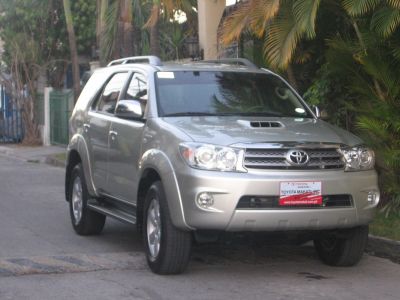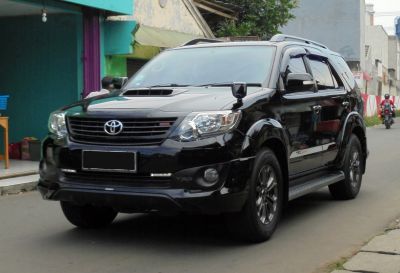 1997 Mitsubishi Montero Sport I Dimensions, Size & Specs
1997 Mitsubishi Montero Sport I Dimensions, Size & SpecsMeasurements of the 1997 Mitsubishi Montero Sport I, engineered for optimal performance and comfort
| Dimensions | |
|---|---|
| Length: | 4610-4725 mm181.5-186.0 in15.1-15.5 ft |
| Width: | 1775 mm69.9 in5.8 ft |
| Height: | 1735-1900 mm68.3-74.8 in5.7-6.2 ft |
| Trunk Capacity: | 500-1350 liter17.7-47.7 cu ft |
| Trunk Capacity (Max): | 1720-2600 liter60.7-91.8 cu ft |
| Weight Specifications | |
| Curb Weight: | 1830-1970 kg4034-4343 lbs |
| Maximal permitted Weight: | 2510-2650 kg5534-5842 lbs |
| Tire Specifications | |
| Rims Size: |
|
| Tire Sizes: |
|
The Mitsubishi Montero Sport I, produced between 1996 and 2006, is a versatile off-road vehicle and SUV that combines rugged capability with spaciousness. This first-generation Montero Sport measures between 4610 mm to 4725 mm (181.5 to 186 inches) in length and has a width of 1775 mm (69.9 inches), with a height ranging from 1735 mm to 1900 mm (68.3 to 74.8 inches), offering a commanding presence on and off the road. Its curb weight varies from 1830 to 1970 kilograms (4037 to 4344 pounds), supporting a maximum weight capacity from 2510 to 2650 kilograms (5535 to 5842 pounds), which shows it is built to handle tough terrains and heavy loads efficiently. The Montero Sport I features a flexible interior with an impressive luggage capacity ranging from 500 liters up to 1350 liters (17.7 to 47.7 cubic feet) under normal conditions, which expands significantly to between 1720 and 2600 liters (60.7 to 91.8 cubic feet) when the rear seats are folded down, making it suitable for families, adventurous trips, and cargo transport. It rolls on sturdy 16-inch rims and supports various tire sizes including 245/70 R16, 235/70 R16, 235/70 R15, 255/70 R16, 265/70 R15, and 265/70 R16, ensuring reliability and grip across diverse terrains. Overall, the Mitsubishi Montero Sport I is a well-rounded choice in the midsize off-road SUV category, delivering a solid footprint and generous space that appeals to outdoor enthusiasts and everyday drivers alike.
Discover the standout features that make the 1997 Mitsubishi Montero Sport I a leader in its class
Have a question? Please check our knowledgebase first.
The Mitsubishi Montero Sport I, produced from 1996 to 2006, has a variable length depending on the specific model year and trim, typically ranging from 4,610 mm to 4,725 mm (181.5 inches to 186 inches). This variation is due to subtle changes or additions in design over its production lifecycle. The length positioning places it well within the mid-size SUV category, making it suitable for both urban and off-road use while providing ample interior space.
The Mitsubishi Montero Sport I has a width of 1,775 mm (approximately 69.9 inches). This width is fairly standard for mid-sized SUVs of its time, offering a balance between interior room and maneuverability. It allows the vehicle to comfortably sit four to five passengers with good shoulder space while still enabling practical driving in city environments. The width contributes to stability at higher speeds and off-road conditions but may require more attention when parking in tight spaces.
The height of the Mitsubishi Montero Sport I varies between 1,735 mm to 1,900 mm (68.3 inches to 74.8 inches), depending on roof accessories, suspension setup, and model variants. This height provides generous headroom for passengers, ensuring comfort in the cabin. The relatively high stance also enhances ground clearance, which is beneficial for off-road capability, allowing the vehicle to tackle rough terrain without compromising passenger space. However, a taller height may influence aerodynamic efficiency and parking in low-clearance areas.
The curb weight of the Mitsubishi Montero Sport I ranges from 1,830 kg to 1,970 kg (4,037 lbs to 4,343 lbs), with maximum permissible weight between 2,510 kg to 2,650 kg (5,535 lbs to 5,842 lbs). This weight affects the vehicle's dynamics, providing sturdy road presence and off-road stability. However, it also means the engine has to work harder, which can result in moderate to high fuel consumption typical for SUVs of this era. The weight contributes to a solid feel on various road surfaces but may slightly reduce acceleration agility compared to lighter SUVs.
The Mitsubishi Montero Sport I offers a flexible luggage capacity ranging from 500 liters to 1,350 liters (approximately 17.7 to 47.6 cubic feet) with rear seats upright. When the rear seats are folded, the capacity significantly increases to between 1,720 liters and 2,600 liters (60.7 to 91.8 cubic feet). This versatility makes it practical for daily errands, family trips, and transporting large or bulky items. The ability to fold down rear seats allows users to customize cargo space to suit different needs without compromising passenger comfort when seats are in use.
Standard garages typically have door widths of about 2.4 meters (7.9 feet) and internal clearance heights around 2 to 2.4 meters (6.6 to 7.9 feet). With a width of 1,775 mm (69.9 inches) and a highest height of up to 1,900 mm (74.8 inches), the Mitsubishi Montero Sport I fits comfortably within these dimensions. Length is usually not an issue since standard garage depths are greater than the Montero Sport’s length of up to 4,725 mm (186 inches or 15.5 feet). Thus, owners should have no difficulty parking this SUV in a regular residential garage.
The Mitsubishi Montero Sport I was introduced as a mid-size SUV positioned between compact and full-size SUVs. Compared to the previous Montero or Pajero models, which were generally larger and more focused on rugged off-roading, the Montero Sport I is slightly more compact yet maintains robust off-road capability. It features a more modern design with a focus on a balance between on-road comfort and off-road performance. The dimensions show a moderate reduction in length and width compared to full-size predecessors, making it more maneuverable without sacrificing too much interior space or cargo capacity.
When compared to mid-sized SUVs from the late 1990s and early 2000s, such as the Toyota 4Runner, Nissan Pathfinder, and Ford Explorer, the Mitsubishi Montero Sport I’s dimensions align closely with its competitors. For example, its length (4,610–4,725 mm) and width (1,775 mm) fall within the typical mid-size SUV range at that time. While it offers competitive cargo space and a tall height for ground clearance, its curb weight is generally in line with rivals, reflecting similar engineering priorities of balancing off-road ability and passenger comfort. Overall, the Montero Sport I competes well dimensionally within this sector.
The Mitsubishi Montero Sport I was equipped with various tire and rim sizes to cater to different driving needs. Rim sizes are primarily 16 inches, while tire sizes include 245/70 R16, 235/70 R16, 235/70 R15, 255/70 R16, 265/70 R15, and 265/70 R16. Larger tires such as 265/70 provide increased ground clearance and better off-road traction capabilities, which is beneficial for rugged terrain. Conversely, smaller tires can improve fuel efficiency and on-road handling. These options allowed owners to tailor the vehicle’s setup depending on whether they prioritized everyday driving or off-road adventures.
The Mitsubishi Montero Sport I is classified as an off-road vehicle and mid-size Sport Utility Vehicle (SUV). Produced from 1996 to 2006, it was designed to provide a balance between rugged off-road capability and family-friendly comfort. This generation gained popularity for its robust build, versatile cargo capacity, and reasonable size. Typical use cases ranged from daily commuting and family transport to outdoor adventures and light to moderate off-roading. Its combination of SUV utility and manageable size made it a popular choice in markets demanding both performance and practicality.
Discover similar sized cars.

| Production: | 2008-2011 |
|---|---|
| Model Year: | 2008 |
| Length: | 4695 mm184.8 in |
| Width: | 1840 mm72.4 in |
| Height: | 1850 mm72.8 in |

| Production: | 2011-2015 |
|---|---|
| Model Year: | 2011 |
| Length: | 4705 mm185.2 in |
| Width: | 1840 mm72.4 in |
| Height: | 1850 mm72.8 in |

| Production: | 2006-2012 |
|---|---|
| Model Year: | 2006 |
| Length: | 4720 mm185.8 in |
| Width: | 1870 mm73.6 in |
| Height: | 1830 mm72.0 in |

| Production: | 2014-2017 |
|---|---|
| Model Year: | 2014 |
| Length: | 4710 mm185.4 in |
| Width: | 1860 mm73.2 in |
| Height: | 1850 mm72.8 in |

| Production: | 2014-2017 |
|---|---|
| Model Year: | 2014 |
| Length: | 4710 mm185.4 in |
| Width: | 1860 mm73.2 in |
| Height: | 1850 mm72.8 in |
